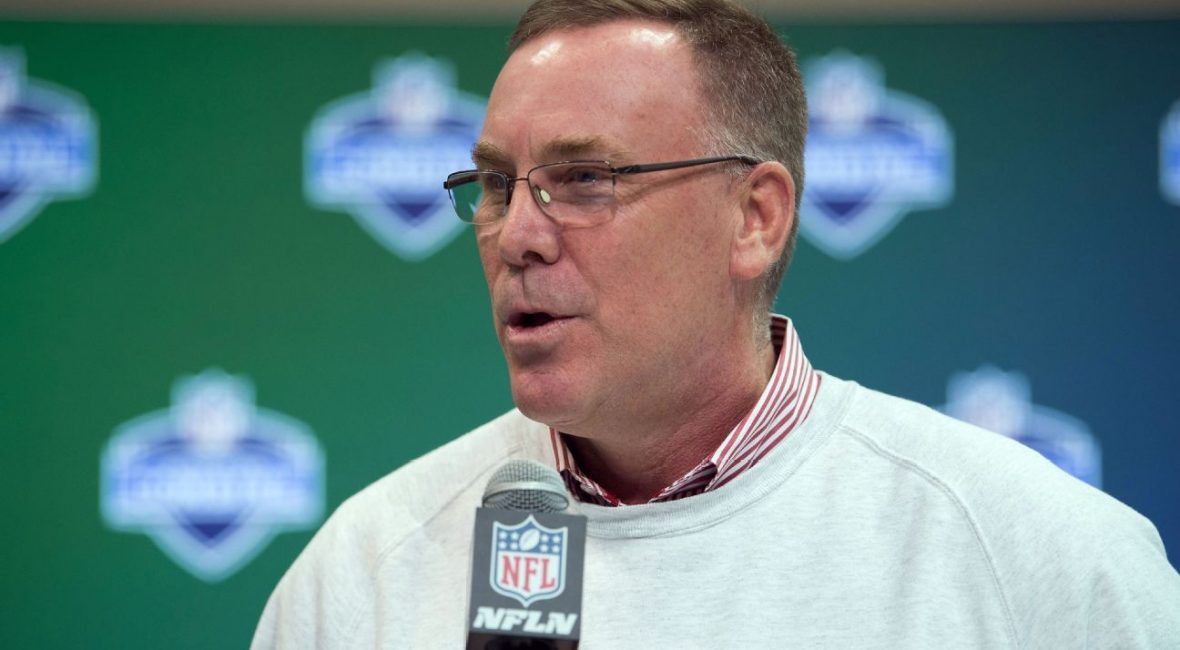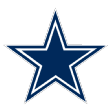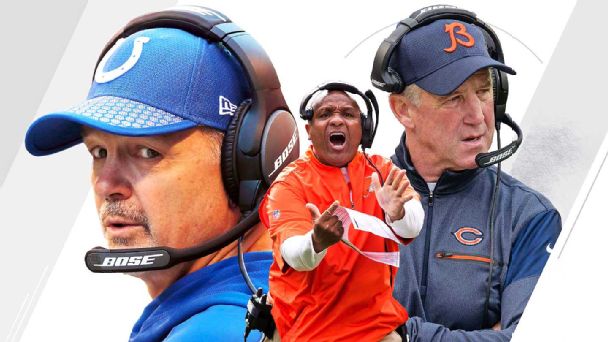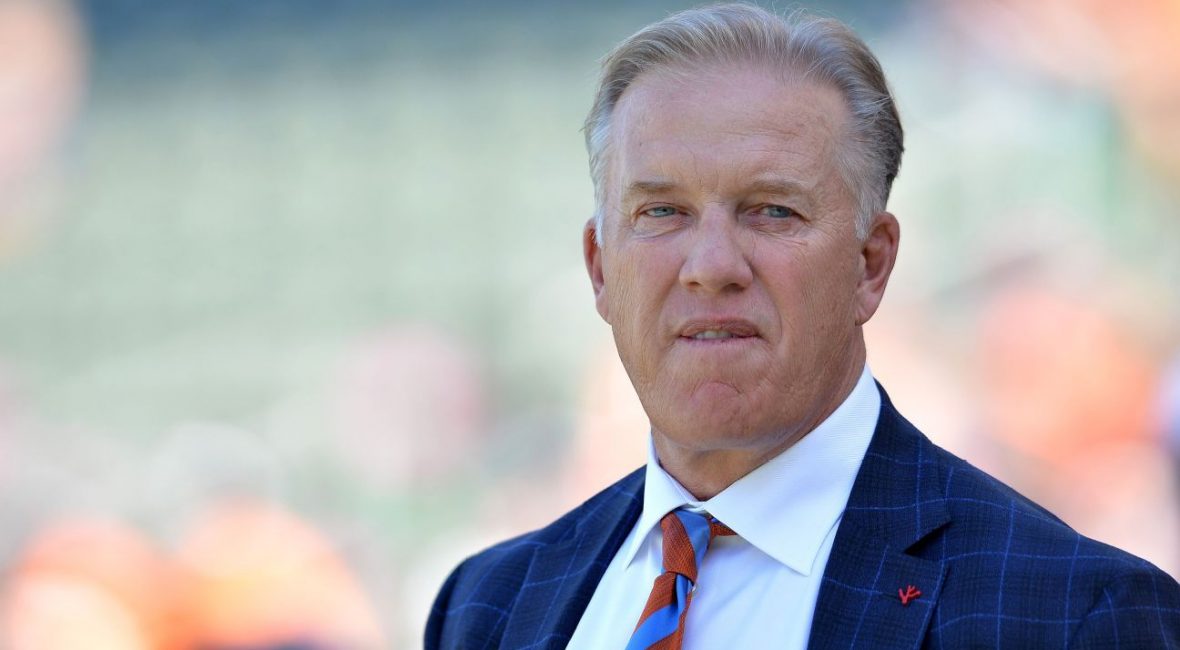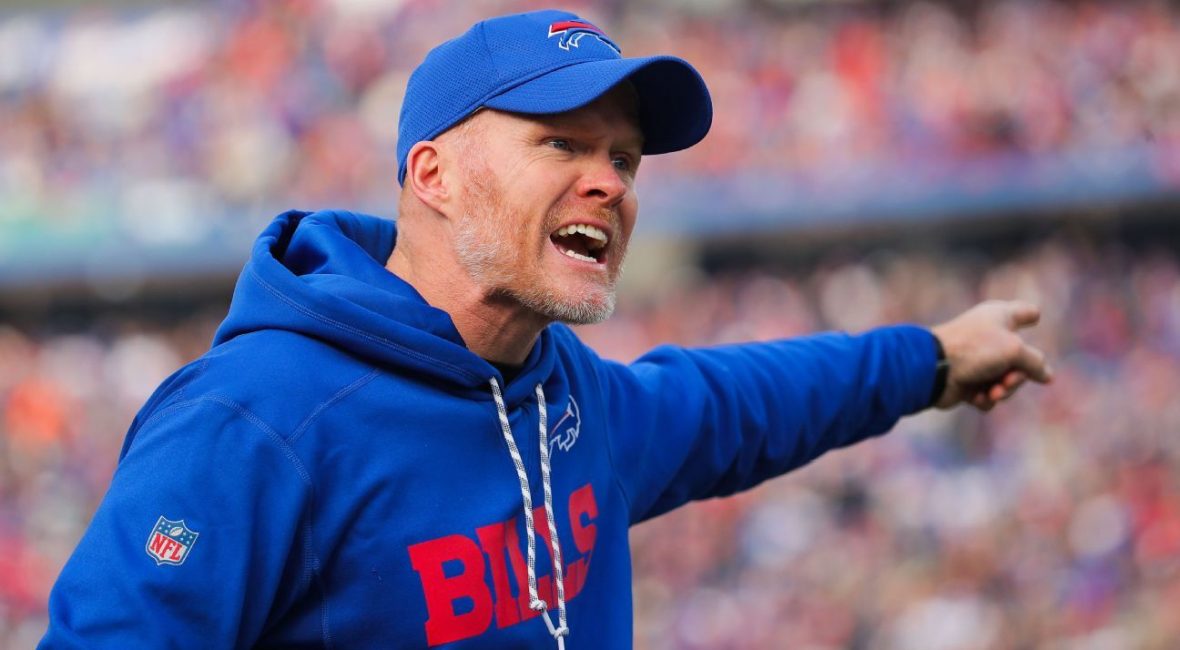NFL Nation reporters assess the biggest injuries across the league for Week 14.
NFC East | NFC North | NFC South | NFC West
AFC East | AFC North| AFC South | AFC West
NFC EAST

Linebacker Sean Lee will return to the defense after missing nearly four full games because of a hamstring strain when the Cowboys face the Giants on Sunday, which should be a major boost. In the five full games without Lee this season, the Cowboys have given up an average of 136 yards on the ground and 23.8 points. In the seven games he has played, the Cowboys have allowed 87.7 yards per game on the ground and 18.3 points. While Lee will be back, cornerback Orlando Scandrick will not play because of two transverse process fractures in his back. There are questions about whether right tackle La’el Collins will be available against New York, which would put Byron Bell in the starting lineup. — Todd Archer

Sterling Shepard is back on the injury report, this time with a hamstring injury. It has been that kind of season for the second-year wide receiver. When he’s on the field, he’s productive. But it has been one thing after another this year between his ankle, migraines and hamstring. He’s now in serious doubt for this week’s matchup with the Cowboys. — Jordan Raanan

Tight end Zach Ertz remains in concussion protocol but is doing well and attending meetings, according to coach Doug Pederson, who believes Ertz is experienced enough to play Sunday even if he’s not cleared until later in the week and has to miss most of practice. If he’s unable to go, expect Trey Burton and Brent Celek to have increased roles. — Tim McManus

As usual, the biggest injury questions for Washington are tight end Jordan Reed and left tackle Trent Williams. Reed’s hamstring will likely force him to miss a seventh consecutive game. And while Williams is never quite sure on Wednesday whether he’ll play Sunday, it would be surprising if he ended up sitting. He understands his importance to the team, especially with the Chargers having two excellent pass-rushers in Melvin Ingram and Joey Bosa. Tackle Morgan Moses will also be one to watch, but he was walking around fine on his sprained ankles. Like Williams, it’s hard to get him to sit out. — John Keim
NFC NORTH

Three defensive starters sat out practice on Wednesday: outside linebacker Pernell McPhee (shoulder), safety Adrian Amos (hamstring) and nose tackle Eddie Goldman (hip). McPhee was unable to finish last week’s game against San Francisco, and is a real question mark to face the Bengals this Sunday. McPhee hurt his shoulder at the end of last year, which caused him to miss the 2016 regular-season finale. — Jeff Dickerson

The biggest question mark is quarterback Matthew Stafford and his right hand. He practiced on a limited basis Wednesday, only doing handoffs in front of reporters. He has also kept the hand covered in almost every public moment around the media. Neither Stafford nor coach Jim Caldwell gave any concrete indication whether Stafford would be fine to play Sunday. Right tackle Rick Wagner (ankle) and right guard T.J. Lang (foot) both missed practice. Considering the offensive line issues, it could be a major problem for a run game that is already one of the worst in the NFL if they’re out. Defensive end Ezekiel Ansah (ankle) also missed practice. Thursday will be a massive practice day, and if the Lions are without those four, a must-win game at Tampa Bay just got exceedingly more difficult. — Michael Rothstein
1 Related

The Packers have all kinds of issues at cornerback. On the day they put their top draft pick, Kevin King, on injured reserve with a shoulder injury, they also did not have Davon House or Demetri Goodson for practice. House banged his shoulder in last week’s win over Tampa Bay. Goodson, who took King’s roster spot after being activated off the PUP list, looked on track to play for the first time since his knee injury 13 months ago, but is now dealing with a hamstring injury. — Rob Demovsky

At some point, the length of Mike Remmers’ stay on the weekly injury report has to be a concern. The right tackle was in the concussion protocol from Weeks 9 to 12. Then last week he sustained a lower back injury during practice that kept him sidelined against the Falcons. Rashod Hill has been excellent in Remmers’ place, but Minnesota has been down its starting right tackle since five minutes into its win over Cleveland. Tight end David Morgan sustained a concussion in Atlanta and did not practice Wednesday, though coach Mike Zimmer said he was doing better earlier in the week. Center Pat Elflein (shoulder), fullback C.J. Ham (neck), defensive tackle Linval Joseph (knee), safety Andrew Sendejo (shoulder) and linebacker Eric Kendricks (hip) were also on the injury report, with everyone but Elflein a full participant. The rookie center was limited in practice. — Courtney Cronin
NFC SOUTH

The Falcons already ruled out left guard Andy Levitre for Thursday night’s game against the Saints with a triceps injury. The question is when Levitre will return. According to medical sources, a partial tear that doesn’t require surgery typically involves two to four weeks of recovery, and there has been no indication that Levitre needs a procedure. The Falcons, with three more games after Thursday, have a chance to make the playoffs. If Levitre doesn’t return, then Ben Garland, a solid run-blocker who needs to show he can pass-protect consistently, has to hold up at the position. — Vaughn McClure

Coach Ron Rivera isn’t optimistic that outside linebacker Shaq Thompson will play Sunday against the Vikings after re-aggravating a foot injury against the Saints last week. That means more playing time for nickel corner Captain Munnerlyn, a former Minnesota player who believes he can help with his knowledge of the Vikings. Pro Bowl tight end Greg Olsen was also a full participant in practice on Wednesday and appears set to play Sunday without what Rivera called a “pitch count.” — David Newton

Running back Mark Ingram is questionable for Thursday night’s game at Atlanta after he was held out of team drills this week with a toe injury. It’s possible the Saints were just limiting his workload since it’s a short week, but they obviously have a capable alternative in Alvin Kamara, who has shown the ability to be an every-down back if needed. They already ruled out starting left guard Andrus Peat with a groin injury, but the Saints will still be in good shape if left tackle Terron Armstead can return this week from thigh and shoulder injuries. New Orleans is also hoping to get two standout rookie starters back in its secondary — cornerback Marshon Lattimore (ankle) and free safety Marcus Williams (groin) — to help protect against Falcons receiver Julio Jones. — Mike Triplett
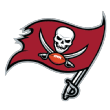
Running back Doug Martin and defensive end Robert Ayers are still in the concussion protocol, but both were practicing Wednesday. They must still be cleared by an independent neurologist before they can officially clear the concussion protocol. Safety T.J. Ward remains in the protocol and has not resumed practicing. Defensive tackle Clinton McDonald continues to be out with a back injury, and cornerback Vernon Hargreaves is still out with a hamstring injury. The big issue is not being able to generate a pass rush with so many players up front injured. The Bucs need it going up against a quarterback like Matthew Stafford. — Jenna Laine
NFC WEST

While left tackle Jared Veldheer’s elbow injury is a major source of concern for the Cardinals, the unknown status of running back Adrian Peterson’s neck injury that kept him out of a fourth straight practice on Wednesday is a bigger issue. Coach Bruce Arians didn’t have an explanation for what the injury was beyond a neck injury. The longer Peterson is out, the more the Cardinals will rely on running back Kerwynn Williams, who has played through cracked ribs. — Josh Weinfuss

The Rams had to cancel their typical Wednesday practice due to the effect local wildfires had on the air quality at their facility, opting instead for a walk-through. But coach Sean McVay said inside linebacker Alec Ogletree, who exited last week’s game early because of a hyperextended left elbow, is “making good progress” and “putting himself in position to be able to go this week.” Outside linebacker Connor Barwin (forearm) is not expected to play. Wide receiver Robert Woods (shoulder) is “making progress,” McVay said, but his status for Sunday’s game against the Eagles remains uncertain. — Alden Gonzalez

Coach Kyle Shanahan said his team emerged from last week’s game the best it had in terms of injuries all year. So, for the second week in a row, the most important injury question is right tackle Trent Brown’s shoulder. Brown played through the injury against Chicago, but Shanahan indicated he would need to be monitored throughout the week, and Brown did not practice on Wednesday. Having him available is crucial for the offense and quarterback Jimmy Garoppolo as San Francisco seeks its third victory of the season. — Nick Wagoner

For as many injury hits as the Seahawks have taken this season, the players they still do have are in relatively good shape. They made it out of last week’s win over Philadelphia without suffering any injuries of note. Two players to watch this week are Dion Jordan (neck) and Nazair Jones (ankle), important rotational players along Seattle’s defensive line. Jordan’s chances of playing Sunday at Jacksonville seem much better than Jones’ based on what coach Pete Carroll has said about their respective situations. — Brady Henderson
AFC EAST

A starting quarterback has yet to be named for Sunday’s game against the Colts because Tyrod Taylor’s status is uncertain after bruising his knee in last week’s loss to the Patriots. Taylor did not practice Wednesday and declined interviews with reporters in the locker room afterward. Coach Sean McDermott, who said Taylor was day-to-day on Monday, added Wednesday that there is “no timetable” for Taylor to return from injury. If he cannot play, rookie Nathan Peterman will make his second career start. — Mike Rodak

Starting center Mike Pouncey did not finish last week’s game against the Broncos due to a hamstring injury. Pouncey is the most consistent player on a very inconsistent offensive line. He hasn’t missed a start all season, and the extra time should help with Miami hosting the Patriots on Monday. — James Walker

Kyle Van Noy, who has played a high of 88 percent of the defensive snaps for Patriots linebackers, is in jeopardy of missing Monday night’s game in Miami with a calf injury. Van Noy had attempted to play through the injury last week against the Bills, but was only used in a limited role (15 snaps) in obvious passing situations. With the Patriots signing free-agent linebacker Jonathan Freeny, it’s a sign the team is prepared to be without Van Noy against the Dolphins. — Mike Reiss

Running back Matt Forte, who is trying to manage a chronic knee injury, is on his usual regimen: No practice on Wednesday and Thursday, then limited work on Friday. The Jets hope the scaled-back program can get him to the finish line. They play this week in the Denver altitude, which makes it imperative to have Forte as part of their three-man rotation. — Rich Cimini
AFC NORTH

Inside linebacker C.J. Mosley missed Wednesday’s practice with a neck injury, the latest issue for the two-time Pro Bowler. He has dealt with an ankle injury recently and has passed the concussion protocol in the past two games. But Mosley has hardly missed any time, and it doesn’t sound like he’ll sit out Sunday’s game at the rival Steelers. “I feel like it’s Week 14,” Mosley said Wednesday. “As long as I’m ready by Sunday, that’s all that matters.” –– Jamison Hensley
![]()
• Rating every head coach’s job security »
• Everything to know about potential openings »

Who isn’t injured on the Bengals this week? The roster was decimated by injuries following the Steelers game on Monday night, and the Bengals could be looking at a seriously depleted defense. Cornerback Dre Kirkpatrick, linebacker Vontaze Burfict and running back Joe Mixon are in the concussion protocol, while cornerbacks Adam Jones and Darqueze Dennard, linebacker Nick Vigil and safety Shawn Williams are all nursing injuries. Kirkpatrick, Burfict and Mixon are the ones to watch, as they must get through the protocol on a short week. — Katherine Terrell

Two key starters missed the first practice of the week: defensive lineman Danny Shelton (ribs) and safety Jabrill Peppers (knee). Both have been playing well recently, and both would matter against the Packers. Coach Hue Jackson will not rule either out, though. In fact, he said he’s “hopeful” both will be back for Sunday’s game against Green Bay. — Pat McManamon

Safety Mike Mitchell and tight end Vance McDonald (ankles) fully participated in Wednesday’s practice. Both players have missed multiple games in the season’s second half. Tyler Matakevich (shoulder) — Ryan Shazier’s potential replacement at inside linebacker — did not practice, but said he has full range of motion in his shoulder. — Jeremy Fowler
AFC SOUTH

Coach Bill O’Brien said he is hopeful wide receiver Will Fuller V (ribs) will be available for Sunday’s game against the 49ers. His availability will be much-needed, as the Texans put tight end C.J. Fiedorowicz (concussion) and wide receiver Bruce Ellington (hamstring) on injured reserve on Tuesday. — Sarah Barshop

Defensive lineman Johnathan Hankins popped up on the injury report after not practicing Wednesday due to a chest injury. Hankins, along with Al Woods, have anchored a defensive line that has played a significant part in the Colts not giving up 100 yards rushing in five straight games. Leonard Fournette, DeMarco Murray, Derrick Henry and Le’Veon Bell are some of the running backs the Colts have faced in that stretch. The Bills, Indianapolis’ opponent on Sunday, are ranked eighth in the NFL in rushing offense. — Mike Wells

Wide receiver Marqise Lee (knee) and cornerback Jalen Ramsey (ankle) did not practice Wednesday but are expected to play against Seattle this weekend. The bigger concern is linebacker Telvin Smith, who has made progress in the concussion protocol but still has not been fully cleared. He’s the Jaguars’ fastest linebacker and would be a big part of the plan to keep Seahawks quarterback Russell Wilson from doing too much damage on scrambles. Wilson destroyed Philadelphia with his legs last week, and the Jaguars want to minimize the potential for big plays. — Mike DiRocco
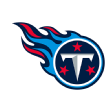
Receiver Rishard Matthews said there is a “high chance” he will return Sunday against the Cardinals after missing the past two games with a hamstring injury. Coach Mike Mularkey also said he expects Matthews, who practiced on a limited basis Wednesday, to return if he continues along the same pace. That would be a significant boost for Titans quarterback Marcus Mariota and the offense. Top cornerback Logan Ryan is in the concussion protocol. His status is important because he would likely match up against Arizona’s Larry Fitzgerald on Sunday if he can clear the protocol in time to play. — Cameron Wolfe
AFC WEST

Wide receiver Emmanuel Sanders (ankle) and guard Ron Leary (back) were held out of practice Wednesday. Leary, who did not play against the Dolphins, is a significant question mark; if he cannot play, second-year guard/center Connor McGovern will make his second career start. Sanders missed two games with the ankle injury earlier this season but had returned to play in the past five games. He has, however, tweaked the injury several times over those five games. It all bears watching for an offense that continues to struggle to find big plays in the passing game. The Broncos do not have a touchdown pass longer than 25 yards this season, and have just eight pass plays overall for more than 30 yards. — Jeff Legwold
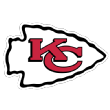
Center Mitch Morse aggravated a foot injury that caused him to miss five games early in the season, and he did not practice on Wednesday. So more upheaval could be coming to the starting offensive line for Sunday’s game against the Raiders. Zach Fulton can adequately handle Morse’s job after shifting from left guard, but the Chiefs would have to go to Bryan Witzmann in his spot. Kansas City recently benched Witzmann, replacing him with Fulton. — Adam Teicher

After sitting out last week’s game against the Browns with a knee injury, rookie wide receiver Mike Williams was a limited participant in practice on Wednesday. Williams ran routes during the early portion of practice open to reporters, wearing a brace on his injured right knee. Coach Anthony Lynn said he will evaluate Williams’ status for Sunday’s game against Washington later in the week. “We would like to have Mike,” Lynn said. “He’s going to be day-to-day. He made some big-time improvements from last week to this week.” — Eric D. Williams

Receiver Amari Cooper sat out last week’s win over the Giants with a concussion and a sprained left ankle he suffered the week prior against Denver on a scary-looking hit near the goal line. Cooper, who has 42 catches for 499 yards and five touchdowns, did not practice Wednesday. He is no longer in the concussion protocol and was in the team’s rehabilitation pool at the start of practice. Receiver Michael Crabtree is back from his one-game suspension and the Chiefs suspended Pro Bowl cornerback Marcus Peters, so if Cooper cannot play at Arrowhead Stadium, Seth Roberts and Cordarrelle Patterson should pick up those receiver reps. — Paul Gutierrez


